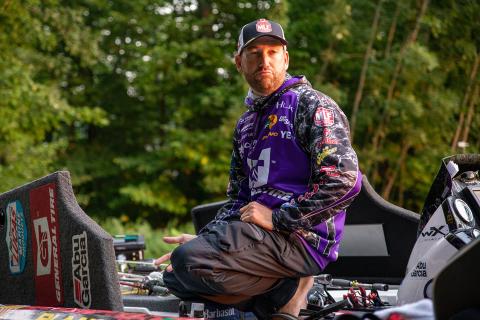Brad Fitzpatrick | Originally published in GameKeepers: Farming for Wildlife Magazine

Managing for upland birds can have a positive influence on your deer habitat and bird hunting provides a great winter alternative to cold mornings on the deer stand. Planting Whistle Back along transition edges is a low cost way to hold birds and add cover to your deer habitat.
Having upland birds on your property increases the value of your land and offers a great wing-shooting opportunity. I don’t know of any bird hunter who doesn’t remember the first time a quail, pheasant, or grouse burst up beneath their feet. For me, it happened in a narrow hayfield in southern Ohio behind a friend’s German shorthair. We were passing through a narrow split of short grass on our way to hunt another field when the dog stopped mid-stride, head low, tail high, frozen. I only made it halfway to the dog when the covey of perhaps a half-dozen quail erupted out of the flattened autumn grass. They drummed up and away, twisting through the leafless trees. Everyone shot but me, I hadn’t even taken the safety off.
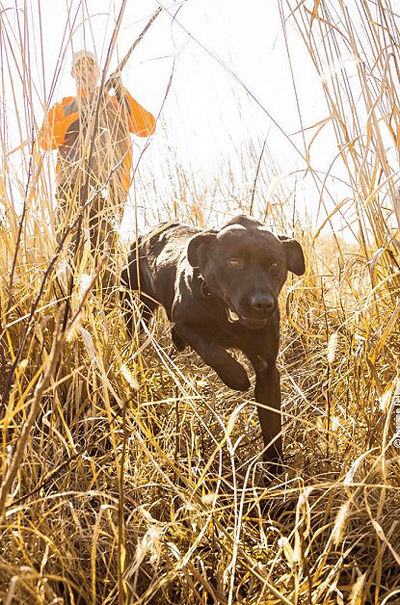
search of birds. The warm season grasses planted in the
fields around the lodge provide food and cover from
predators yet they don’t impede bird movement on the
ground, an ideal situation.
That first bird hunt was eye-opening, but it set the tone for the rest of my life. I was so enamored with that single covey rise that within a year I had a dog, and by the time the season came the following year I was better prepared. The birds went down, my adrenaline rose, and I’ve been an upland bird hunting addict since.
The world of upland bird hunting has changed greatly over the past two decades, and most of the change has been for the worse. The declining numbers of quail in the south and the Midwest has been blamed on a variety of different evils, from a sudden abundance of predators (feral cats and birds of prey named as the primary culprits), to an increase of invasive plant species, to disease. However, the drop in bird numbers primarily stems from a single factor—loss of habitat.
Gone are the hay fields, “dirty” fence-rows and small-time farming operations that once served as a home for quail and pheasants. CRP ground is still home to lots of birds, but the amount of land subscribed has declined. Thrilling as upland bird hunting can be, it has declined in popularity corresponding with the fall in bird numbers. There may come a time when young hunters don’t have a “first flush” story to share because the birds are simply gone.
Property managers can do their part to increase bird numbers and create a habitat for remaining wild birds or transplants. Adding managed upland bird habitat to your property increases the value, whether you’re planning on running a hunting preserve or simply want your deer hunting property to stand out with the addition of a diverse habitat that supports abundant species. Even if you aren’t managing the property for profit and simply want to diversify your habitat you’ll find that managing upland bird hunting acreage adds value and excitement to your property. If you can hunt both types of game on the same property, even better - after a long, cold morning of deer hunting it’s great to spend an afternoon chasing upland birds.
Adding Upland Birds to Your Hunting Property
You may be one of the fortunate landowners whose property has wild birds, and if so, consider yourself lucky. By and large upland habitat has vanished and the birds have disappeared along with it, so most upland bird hunting operations involve releasing pen-raised birds. The good news is that pen-raised upland birds can thrive in the same habitat that wild birds enjoy, so the methodology is the same even though released birds have a much higher mortality rate than wild birds. There are three primary upland bird species that are managed on preserves here in the United States, one native and two imports. The favored native bird is the bobwhite, the classic North American upland species.
The other two species were introduced to this country and have managed to make themselves at home here. One, the ring-necked pheasant, comes from China, and the other, the tough little chukar, comes from the dry desert mountains of the Middle East. Even though these three birds come from disparate regions of the world, management principles remain the same; the birds need sufficient feed and plenty of cover to protect them from the elements and predators.
Before you begin, you need to outline your management goals in regards to upland birds. Do you want a small field where you can release birds each year to keep your dogs in tune for the hunting season? Are you looking to start a put-and-take preserve operation where you release birds for hunting each year? Or are you invested in creating a large-scale wing-shooting operation that supports stable populations of wild birds? If the two former goals meet your needs then you can accomplish your goals fairly easily, and on small acreage you could plant some sunflower seeds and dig a pond to create a fantastic dove, duck, and upland bird hunting property. If, however, you’re looking to establish a stable breeding population of birds on your property you need to understand that you’re in for a challenge.
A quandary may arise if you wish to manage for whitetails, as you can imagine, mature bucks don’t like shotguns going off nearby or daily disturbances through their core areas. Yet if your property is large enough and you keep the turmoil measured, both are possible. And many of the habitat transformations you make for upland birds will benefit your whitetails, and vice versa. For instance, a strip of WhistleBack planted around a food plot’s perimeter, with its tall grasses will help to increase whitetail utilization of the plot. And in return, food plots planted for whitetails will be used by the birds and/or make great bugging habitat.
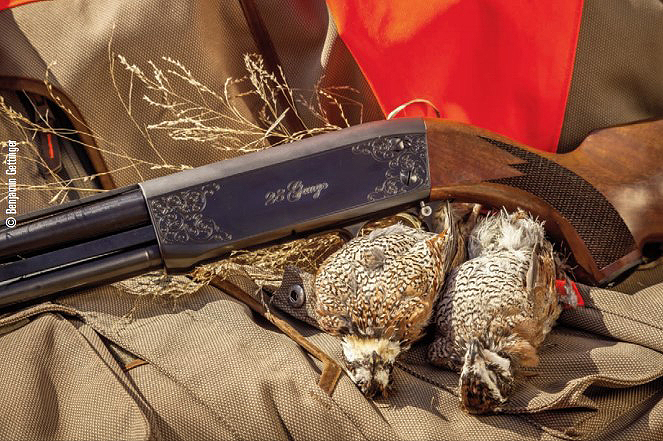
According to research published by the Samuel Roberts Noble Foundation, quail require enough habitat to support 800 birds (to prevent localized extinctions), and area that ranges from 800 to 8,000 acres. If you’re managing smaller properties for upland birds you need to also manage your expectations; chances are you’re simply going to be providing habitat for birds that are released.
No matter your management goals, the objectives of managing upland bird habitat remain the same. The two basic principles that apply to all species in all areas are you must provide a year-round food source and plenty of protective habitat. Most land managers do an excellent job providing food sources to the game on their property, whether that’s deer, turkey, ducks, or upland birds, but many underestimate the value of extensive cover, especially in the winter months when it is easier for predators to find the birds. Cover is a critical factor for upland birds, and it’s often the limiting factor preventing bird populations from increasing. Proper cover not only provides thermal protection during winter, but also good brooding habitat and is a landowner’s best defense against predation. Here again, in addition to benefiting your birds, this cover can significantly impact your whitetail population and utilization.
Providing Nutrition for Upland Bird Survival
Providing productive food sources year round is critical for bird survival. More high-quality food means the birds will have to travel less. This means fewer chances for predation and they will be in better condition going into winter. Food plants should correspond with the ecological needs of the particular bird species you are planning to have on your property. Quail utilize a variety of grasses, forbs, and woody plants, with some of the best options being bluestem, broomsedge, Indian grass, timothy, orchard grass, alfalfa, small-leaved clovers, pokeweed, ragweed, sunflower, briars and even poison ivy. Many of these plants occur naturally, so your property may already have a good starting food source for the birds, though you may need to supplement.
For chukar and pheasants, crop plants are a key food source and these include corn, sorghum, millet, and sunflower. It’s interesting to note that many of these food sources overlap with deer management strategies, so if you’re already managing your property for deer then adding some bird habitat won’t require major changes to your established management plan.
It’s important to understand that liberated birds, even when introduced in areas with plentiful food sources, often starve to death within the first few weeks of release. This is because even though the birds are in a suitable habitat they don’t immediately know which food sources to utilize. That process can take time, and you don’t want the birds to starve while they’re sorting out their new environment. For this reason, many landowners set up “Johnny houses,” which keep the birds safe and dry as they acclimate to their new surroundings. Primarily used on quail, Johnny houses are also effective on other game birds as well, providing the birds with a safe shelter area and food while they acclimate to their surroundings. In most cases, a few birds are liberated each day and they then return to the house at night, with more birds being released each day until the covey has established themselves in the habitat.
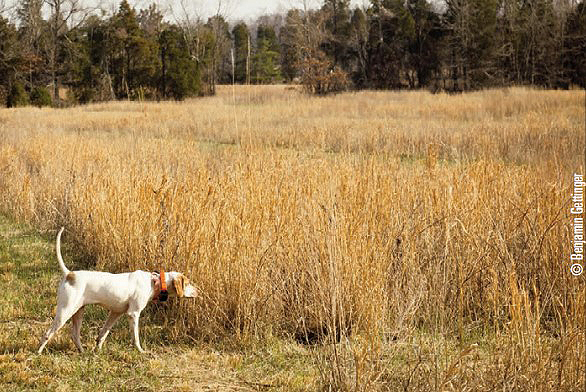
Winter is an extremely tough time for birds, and providing a food source to help maintain birds through the fall and winter is essential. Modern agricultural practices are highly efficient and very little grain is left behind after harvest, so allowing crops like millet, corn, and others through the winter will help provide the birds with a ready food source. Another excellent winter product is BioLogic’s WhistleBack, which is planted during the spring in the north through summer in the south, will provide maximum winter feed for upland birds as well as turkey, doves, and waterfowl. By planting a quality overwintering food source you are increasing the odds that you’ll have birds the following spring, and even planting small strips of a product like WhistleBack along the edge of deer plots will do a great deal to draw and hold birds on your property.
Offer Concealment and Protection
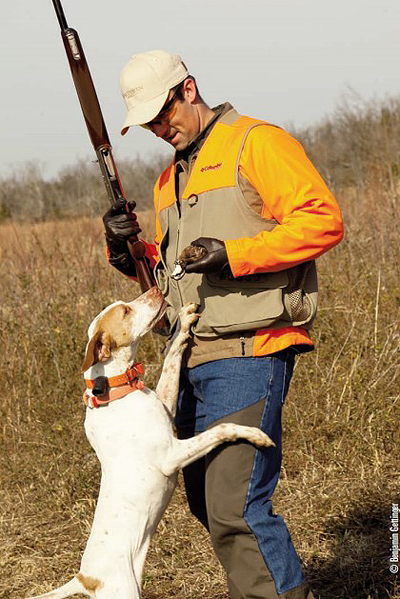
haven’t worked well everywhere. However, if you do your
homework and provide good habitat it is possible to lure and hold
local birds on your property.
As previously stated, providing appropriate cover is absolutely critical to the success of any upland bird management program. Your cover should be functional and diversified, providing protection from predators, the elements, and reducing stress on local birds. In the spring, some of this habitat should also provide a good place for brooding.
Quail rely heavily on cover, and many land managers and researchers suggest that the birds should be within 100 to 200 yards of protective cover at all times. Early twentieth century farming practices, which utilized basic planting methods on small acreage, provided perfect quail habitat; there was a lot of waste grain for feed, and more importantly, there were lots of fence rows for protective cover.
Today, most upland areas have manufactured rows, which are still effective. The best bird habitat provides plenty of shelter and makes it all but impossible for most predators to get to the birds. In many areas, the two primary cover types are grasses and tree cover. With the exception of grouse, most upland birds survive on the edge of forests and don’t need a lot of timber to survive, so areas with scattered rows of trees are ideal. Unlike mature forests, these rows don’t have a closed canopy that reduces growth of plants on the ground, which is perfect for feeding birds. Planting rows of soft mast trees and oaks from Nativ Nurseries is a good way to attract deer to your property, but it’s also an effective way to draw in game birds because you are providing critical habitat that birds need in the form of woody fencerows.
Grasses also provide cover, and appropriate grass cover is one of the most critical elements in the upland property management. Grasses like corn provide fantastic cover because they reduce predation, break up wind, minimize the impact of precipitation on the birds, and also provide a source of food. Finding the right grass cover is critical for the success of your habitat, and some of the best choices are sunflowers, corn (particularly for pheasants, but only if left unharvested), and millet.
Grasses that grow in clumps rather than a solid matt are important for brood rearing and recruitment. Big bluestem, Indian grass, little bluestem and prairie dropseed make excellent native grass stands that will heighten your brood rearing capabilities. In addition to providing billions of seeds per acre, these grasses will help chicks escape predation because they can weave throughout the labyrinth of grass clumps.
BioLogic’s grain sorghum is an excellent choice because it provides a food source as well as dense cover for protection in the winter months. Another option is Egyptian wheat, which grows very tall and provides excellent winter habitat for upland birds. These plants are all hardy enough to provide good winter cover and yet the ground cover is open and allows birds to move freely.
Best for Both Worlds
The majority of property managers focus on deer, but the savviest managers understand that land should be versatile, and diversifying your property adds to the value. Upland bird hunting can be lucrative in the form of established shooting preserves, but any property manager can take a few simple steps to add plants to their land that will bring birds to your property or help support existing populations. And when that bird flushes underfoot and you start to shoulder your gun you’ll know it’s all been worth it. Just don’t forget to take the safety off first.














